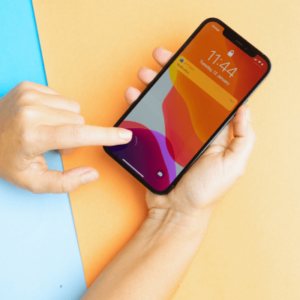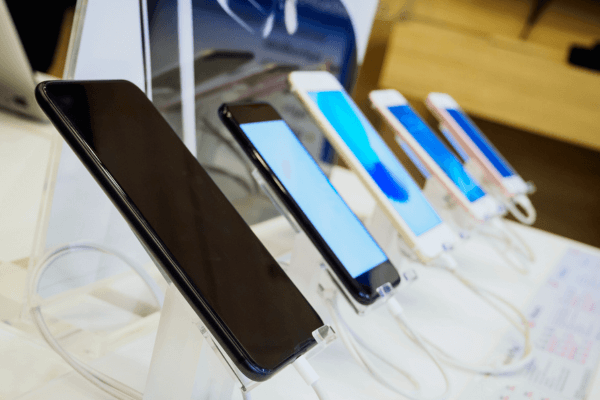The shift towards eSIM technology heralds a new era of streamlined mobile device design, enhanced user experiences, and broader connectivity possibilities, laying the groundwork for a future where mobile devices are more versatile, sleek, and eco-friendly than ever before.
Revolutionizing Mobile Device Design with eSIM
Gone are the days when the physical SIM card was a staple of mobile device architecture. With the advent of eSIM technology, mobile device design is undergoing a radical transformation. The elimination of the physical SIM card slot has unlocked new possibilities for device manufacturers. Freed from the constraints of accommodating a SIM tray, designers can now create slimmer, more compact devices. This space-saving feature also opens up room for additional innovations, such as larger batteries, more advanced cooling systems, or enhanced camera technology, thereby directly contributing to the improvement of device capabilities and performance.

Examples of Innovative Mobile Design Powered by eSIM
The Slim and Sophisticated Apple iPhone Series
Apple’s iPhone models, starting from the iPhone XS onwards, exemplify the integration of eSIM technology. This design choice has allowed for sleeker designs and the enhancement of internal space utilization, paving the way for larger batteries and improved internal layouts that enhance the device’s overall performance and user experience.
Google Pixel’s Seamless Connectivity
Google’s Pixel 2 was among the pioneers in adopting eSIM technology, setting a precedent for seamless connectivity. The Pixel series continues this trend, utilizing eSIM to facilitate easy network switching and dual SIM capabilities, without compromising the phone’s compact and ergonomic design.
Samsung Galaxy Watch 3 – A Leap in Wearable Design
Samsung Galaxy Watch 3 utilizes eSIM technology to provide standalone cellular connectivity, liberating it from the dependency on a paired smartphone. This advancement in wearable technology exemplifies how eSIM can enable more autonomous, design-efficient smartwatches that offer a blend of style, functionality, and convenience.
Enhancing User Experience Through eSIM Integration
Beyond its impact on hardware design, eSIM technology is significantly enhancing the user experience. The traditional process of switching or upgrading a device often involved the cumbersome task of swapping tiny SIM cards, sometimes requiring a visit to a carrier’s store. eSIM simplifies this process immensely. Users can now activate a cellular plan with just a few taps on their device, bypassing the need for physical SIM cards altogether. This not only streamlines the setup but also allows for easier carrier switching and international travel, as users can choose to change their service plans without needing to obtain a new SIM card.

The Role of eSIM in Supporting IoT and Smart Devices
The influence of eSIM extends beyond smartphones, playing a pivotal role in the expansion of the Internet of Things (IoT). With eSIM, a myriad of devices — from smart watches to connected home appliances — can now effortlessly connect to cellular networks, paving the way for a truly interconnected world. This seamless connectivity is driving innovation in mobile device design, encouraging the creation of a diverse array of smart, connected products that can communicate with each other and with cellular networks, without the need for direct human intervention.
eSIM and the Push for More Sustainable Mobile Device Design
Sustainability is becoming a key consideration in product design, and the mobile device industry is no exception. eSIM technology contributes positively to environmental efforts by eliminating the need for plastic SIM cards and the packaging that accompanies them. Furthermore, by enabling devices that are potentially longer-lasting due to their adaptable connectivity, eSIM technology supports the production of less waste and promotes a more sustainable lifecycle for mobile devices.
Challenges and Opportunities in eSIM-Enabled Mobile Device Design
While eSIM technology brings numerous benefits, it also presents challenges. Technical hurdles, such as ensuring security and privacy in the provisioning process of eSIM profiles, are paramount. Additionally, there are regulatory and market barriers to overcome, including the need for widespread carrier support and consumer education about the benefits and operation of eSIM technology.
However, these challenges are also gateways to opportunities. The push towards resolving these issues accelerates the adoption of digital solutions, fostering an environment ripe for innovation. As these obstacles are addressed, we can expect to see even more creative and groundbreaking developments in mobile device design and functionalities.
Future Trends: eSIM’s Impact on Next-Generation Mobile Devices
Looking ahead, eSIM technology is poised to continue its influential role in shaping the future of mobile device design. We can anticipate the emergence of devices that are not only physically different but also smarter and more integrated into our daily lives. From augmented reality (AR) glasses that seamlessly connect to the internet to innovative wearables that monitor health while staying connected globally, the possibilities are endless. The continued evolution of eSIM will undoubtedly pave the way for new device categories, further blurring the lines between technology and everyday life.
Conclusion: The Integral Role of eSIM in Shaping Mobile Device Design
The transition to eSIM technology represents a turning point in the mobile device industry. It’s an exciting time for manufacturers, designers, and consumers alike, as we witness the unfolding of a new chapter in mobile device design and innovation. With each advancement, eSIM technology reinforces its critical role in shaping the future—not just of smartphones but of all connected devices. Its influence spans design, functionality, user experience, and environmental sustainability, making it a keystone of modern telecommunications.
Ready to Explore the World of eSIM?
Are you intrigued by the possibilities eSIM technology offers for seamless connectivity and cutting-edge mobile device design? Explore a world where changing your phone plan is as easy as clicking a button, and your devices are sleeker, smarter, and more integrated than ever before. Discover the future of telecommunications with us. Click here to start your eSIM journey today!
Don’t miss out on the revolution. Join us now and redefine your connectivity experience!



